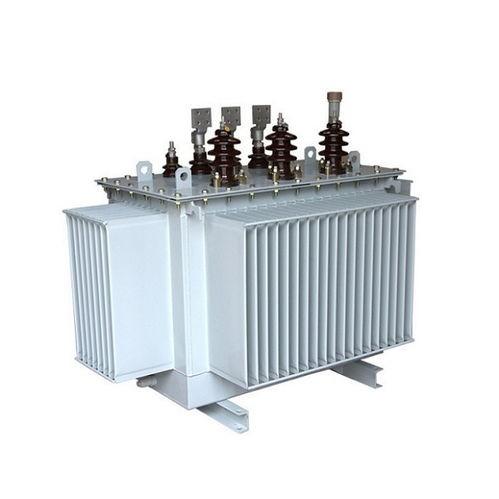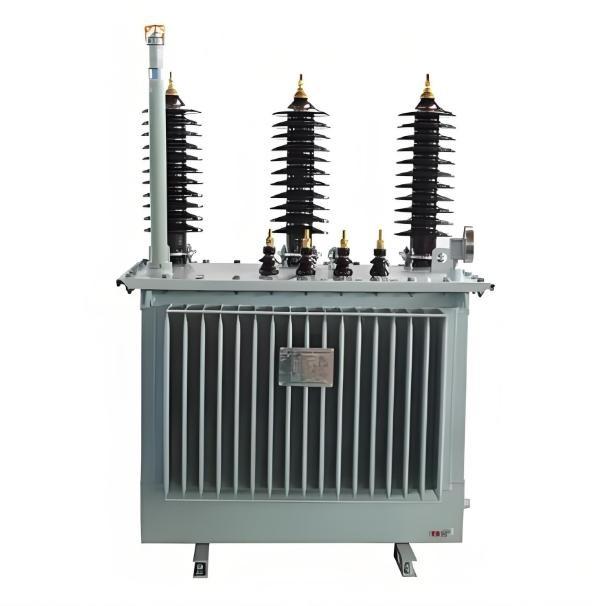Praktikal nga Pagbahin sa Kahibalo gikan sa usa ka Electrical Engineer sa Field
Gikan kay James, 10 Ka Tuig sa Electrical Industry
Kamusta tanan, ako si James, ug nagsilbi nako sa electrical industry samtang 10 ka tuig na.
Gikan sa maong pagkakaron sa substation design ug pagpili sa equipment, hangtod sa pagdumala sa relay protection ug automation system commissioning alang sa buhaton nga mga proyekto, ang pinaka gamiton nga device sa akong trabaho mao ang current transformer (CT).
Kaniadto, ang isang kasinatian nga nagsugyot lang sa industriya miugali ko:
“Unsa ang dapat kong ipahimulos sa pagpili og current transformers alang sa 10kV station transformer circuits?”
Maayo nga pangutana! Daghan nga mga tawo nag-isip nga ang pagpili og CT mao ra gyud ang rated current ratio — apan aron masayran ang kinahanglan sa circuit, kinahanglan nimong hatagan og atensyon ang daghang mga factor.
Karon, ipabahin nako kanimo pinaagi sa simple nga pulong — batas sa akong hands-on experience samtang ang nakalabay nga tuig — unsa ang key points nga dapat kong ipahimulos sa pagpili og CTs alang sa 10kV station transformer circuits, unsa ang kahulugan sa bawg parameter, ug paunsa ang pagbuhat sa tamang pagpili.
Walay komplikado nga jargon, walay endles nga standards — simple lang nga praktikal nga kahibalo nga makagamit ka sa real life.
1. Asa ang Importansya sa Maayo nga Pagpili og CTs alang sa Station Transformer Circuits?
Bisan ang station service transformer dili ang primary power transformer, importante gyud ang iyang papel sa paghatag og internal power sa substation — kasagaran ang control power, lighting, maintenance power, ug UPS systems.
Kon ang station transformer mag-fail o ang iyang protection mag-malfunction, mahimong mag-lead niini:
Pagkawala sa control power;
Ang DC system mag-lose sa charging capability;
Ang buhaton nga substation mag-shut down.
Og tungod kay ang current transformer ang core component sa protection ug measurement, ang pagpili niini direkta ang makaapekto kon reliable ba ang protection ug accurate ang measurements.
Sulod, ang pagpili sa maayo nga CT = seguridad + reliability + cost-effectiveness.

2. Seis nga Key Points Sa Pagpili og CTs alang sa 10kV Station Transformer Circuits
Batasa sa akong 10 ka tuig sa field experience ug project practice, ania ang seis ka most important considerations:
Point 1: Rated Primary ug Secondary Current
Purpose: Siguradohon nga ang CT operates normal ug meets protection sensitivity requirements.
Ini ang labi ka basic ug important nga parameter.
Common combinations:
Primary current: 50A, 75A, 100A, 150A (depende sa station transformer capacity)
Secondary current: 5A o 0.5A (most modern protection devices use 0.5A)
Ang akong advice:
Usual nga pili ang primary current as 1.2~1.5 times the station transformer’s rated current;
Para sa microprocessor-based protection, prefer 0.5A output to reduce secondary load;
Avoid selecting too high a rating — otherwise accuracy may be poor at low currents, affecting protection performance.
Point 2: Accuracy Class Matching the Application
Purpose: Ensure different functions (like protection, measurement, metering) receive accurate signals.
Different applications require different accuracy levels.
Common classes:
Measurement winding: Class 0.5
Metering winding: Class 0.2S
Protection winding: 5P10, 5P20, 10P10, etc.
My experience:
Station transformer circuits usually don’t require high-precision metering unless there's billing involved;
Protection windings must maintain linearity during short circuits;
Multi-winding CTs offer more flexibility and are recommended.
Point 3: Rated Output Capacity (VA Value)
Purpose: Ensure the CT can drive the connected meters or protection devices.
Insufficient capacity can cause voltage drop, affecting measurement accuracy or protection operation.
Calculation formula:
Total Load = Cable Impedance + Instrument/Protection Device Input Impedance
My advice:
Typically choose between 10–30 VA;
Microprocessor protection devices consume less power — lower capacity acceptable;
If the secondary cable is long (e.g., over 50 meters), increase the capacity appropriately;
Don’t blindly select high capacity — avoid core saturation.
Point 4: Thermal and Dynamic Stability Check
Purpose: Ensure the CT can withstand short-circuit current without damage.
In 10kV systems, short-circuit currents can reach thousands of amps.
How to do it:
Check maximum short-circuit current (Ik);
Verify CT thermal stability current (It) and dynamic stability current (Idyn);
Generally, It ≥ Ik (for 1 second), Idyn ≥ 2.5 × Ik
Real case: I once had a CT explode after a short circuit — turned out the dynamic stability current didn’t meet system requirements. Replacing with a higher-rated CT solved the problem.
Point 5: Installation Method and Structure Type
Purpose: Ensure the CT is easy to install and maintain, and fits the available space.
Common CT types include:
Core-type (common in switchgear)
Post-type (suitable for outdoor use)
Bushing-type (often used on transformers)
My advice:
In 10kV switchgear, core-type CTs are most common;
Make sure the conductor size matches the core hole diameter;
For tight spaces, consider split-core CTs for easier installation and removal;
In humid or corrosive environments, choose moisture-resistant or corrosion-proof models.
Point 6: Polarity and Wiring Method
Purpose: Ensure the signal direction to protection relays and instruments is correct, avoiding misjudgment.
Incorrect polarity can lead to:
Misoperation or failure of protection;
Wrong power flow direction judgment;
False alarms in differential protection.
My experience:
All CTs should clearly mark polarity terminals (P1, P2);
Use subtractive polarity connection consistently;
Always perform a polarity test after installation or maintenance;
Use a dedicated polarity tester or DC method for verification.
3. Other Practical Tips
In addition to the six key points above, here are some other important notes:
Multi-winding Configuration:
Separate windings for protection, measurement, and metering to avoid interference;
Reserve spare windings for future expansion.
Excitation Characteristics:
Especially for protection windings, good excitation characteristics improve protection reliability;
If possible, perform an excitation curve test to confirm core performance.
Sample Selection Reference for a 50kVA Station Transformer

4. My Final Suggestions
As someone with 10 years of field experience, I want to remind all professionals:
“Don’t just look at the model number — always consider the actual circuit, protection setup, and installation environment when selecting a CT.”
Especially in seemingly "simple" 10kV station transformer circuits, improper selection often leads to serious consequences.
Here are my recommendations for different roles:
For Maintenance Personnel:
Learn how to read CT nameplate information;
Understand basic parameter meanings;
Be familiar with polarity testing methods;
Report any abnormalities promptly.
For Technical Staff:
Master CT selection calculation methods;
Understand protection winding characteristics;
Know how to interpret system short-circuit parameters;
Be able to analyze excitation curves.
For Managers or Procurement Teams:
Clearly define technical specifications;
Choose reputable manufacturers with stable quality;
Request full test reports from suppliers;
Maintain equipment records for traceability.
5. Closing Thoughts
Current transformers may look small, but they are the eyes and ears of the entire power system.
They’re not just about reducing current — they’re the basis for protection, the foundation for metering, and the guarantee of safety.
After 10 years in the electrical field, I often say:
“Details determine success or failure, and proper selection ensures safety.”
If you ever run into difficulties selecting CTs, dealing with frequent protection misoperations, or unsure if your parameters are suitable, feel free to reach out — I’m happy to share more hands-on experience and solutions.
May every current transformer operate stably and safely, safeguarding the accuracy and reliability of our power grid!
— James
























